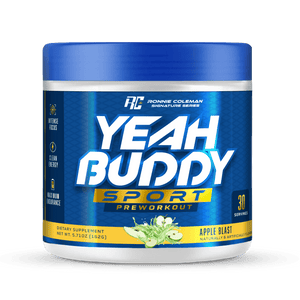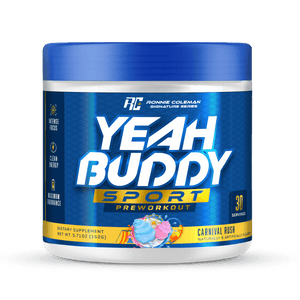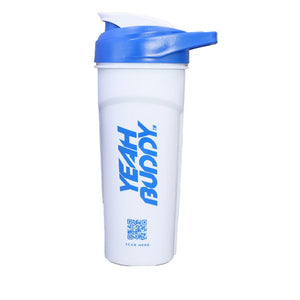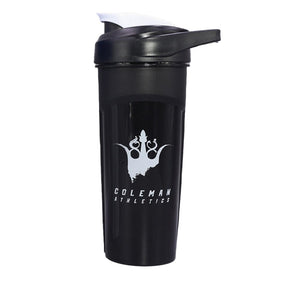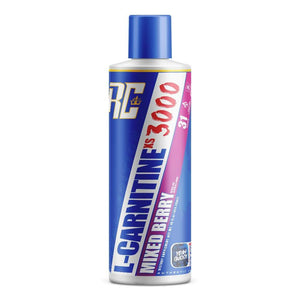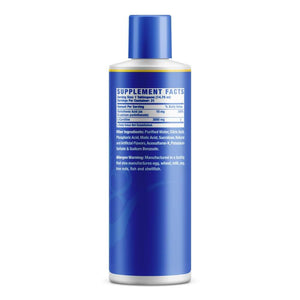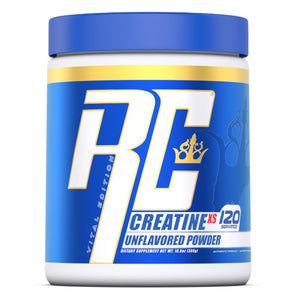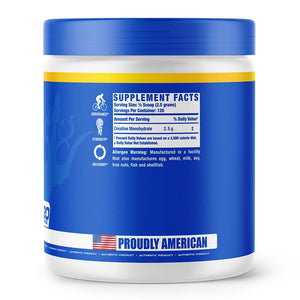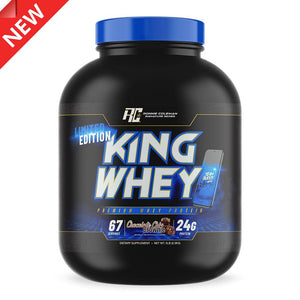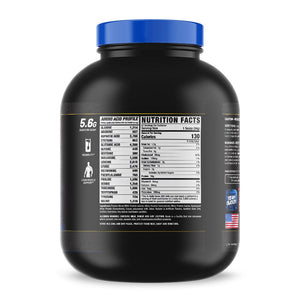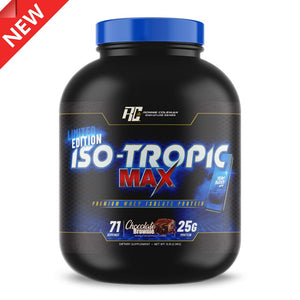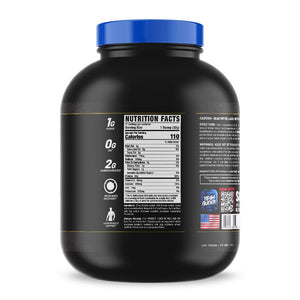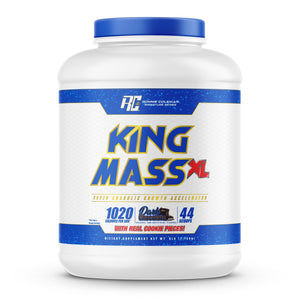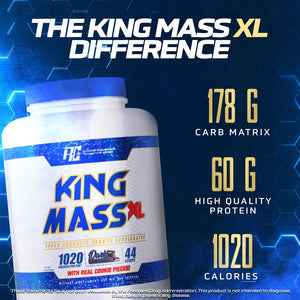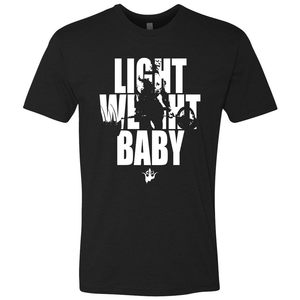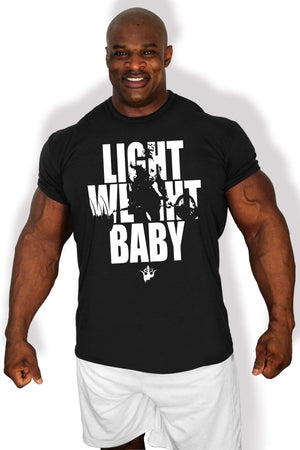Creatine is the OG of bodybuilding supplements and can be overlooked in a world of new fancy products in your face everyday. Truth is, creatine is the MOST studied supplement of all time and guess what... it works!
First off, let's get this out of the way: What is creatine? The textbook definition calls it "an amino acid, C4H9N3O2, that is a constituent of the muscles of vertebrates and is phosphorylated to store energy used for muscular contraction." Say what? Translations:
- Amino acid: Molecular-level organic compounds that typically contain carbon (C), hydrogen (H), oxygen (O), and nitrogen (N). (Apologies to all the chemists out there - rest assured, this is just a SparkNotes definition.)
- C4H9N3O2: No idea.
- Phosphorylated: In this context, your body's metabolic absorption of that alphabet-soup amino acid (above) for muscle growth. (We're pretty sure, at least ... The author of this article may or may not have taken chemistry once, in 10th grade, and considered himself lucky to escape with a C.)
- C4H9N3O2: Okay, we went back to this. Turns out, it's the chemical composition of creatine. Four carbon molecules, nine hydrogen, three nitrogen, and two oxygen. Let that marinate. You never know when you'll need to impress someone over Trivia Night at your next Happy Hour outing.
Whew! Now that chemistry class is over, what do you really need to know about creatine, in the real world? Here are a few pointers:
- Sorry, What is It?: Basically, C4H9N3O2 is a chemical compound that you already have in the cells of your muscles. Creatine helps you push through intense cardio, or those teeth-clenching moments when you're straining to make that final bench press. In a word, it's surplus energy. The scientific explanation for that "last-minute stamina" that Muhammad Ali said that all champions draw from deep within themselves - "a desire, a dream, a vision." Sure. But also creatine.
- Safety: Critics of the 'tine - could that be a marketable nickname? - have charged that it's a one-way street leading to cramps, bloating, liver damage, kidney stones, and just gettin' fat. The pro-creatine crowd would call those accusations pure malarkey. Who's right? Well, according to the International Society of Sports Nutrition, creatine is "extremely safe." If the ISSN finds in creatine's favor, that's good enough for us. So if you talk to a bro nutritionist or another expert whose take on creatine is that it will make cramps and bloating part of your near future tell them that experts at the ISSN disagree. (However, we always urge you to read up as much as you can on any supplement that you're uncertain about.)
- What Happens When You Take the 'Tine?: (We're proceeding here in the hope that "'tine" will enter the lexicon the way that creatine enters your bloodstream.) Did you know, your body absorbs the 'tine when you eat meat and fish? Problem is, what you eat au naturale often isn't enough to maximize the muscle-creating potential that creatine supplements spur. Here's a breakdown of the numbers:
- Your body normally stores 120 mmol/kg of 'tine, but with supplements, it can store up as much as 140-150 mmol/kg.
- On that note, what's a "mmol"? The "m" refers to a mole, or the quantity of a substance that contains a large number of atoms or molecules. (The kind with 20+ zeros behind it.) So the "mmol" is a millimole - one-thousandth of a mole. No, I don't fully understand it, either. (See the C report card above.) Suffice it to say, powder 'tine boosts your muscle growth more than a regular intake of creatine-heavy foods would do on its own. Ask a scientist for more details.
- Foods chock-full of creatine are usually "muscle foods" as opposed to "organ foods." High in creatine? Fish, pork, chicken, red meat. Low in creatine? Liver, kidney, heart. (In other words, skeletal muscle vs. internal organ. Which makes sense: 90% of our creatine is stored in our muscles.) Point being, if you've ever cringed at the thought of eating liver and pate, you officially have a reason to stay away. "Sorry, I'm low on creatine today," is an accepted excuse now even when your host offers you some kidney. "Pass the red meat, please."
Great, now we know all about creatine. But, damn it, when should you take it? Some ideas:
- Nutrition: Creatine is a supplement, not a meal unto itself. Not to backtrack, but you should take creatine supplements when your body hits that 120 mmol/kg storehouse capacity and you want to nudge it up into the 140-150 mmol/kg range. True, you don't have a "mmol/kg" therometer that you can stick under your tongue. But you can make sure that you're eating a balanced diet. (Pardon me a digression into the importance of nutrition in bodybuilding. I promise I'll return to creatine.)
- According to the American College of Sports Medicine, you need to consume 0.5-0.8 grams of protein per pound of body weight each day to gain muscle for the long-term. That bodybuilding axiom probably requires less explanation than the "mmol/kg" discussion because most people have already heard of it. But, to review: If you're a 200-pound man and you want to pack on the beef, you should be eating between 100-160 grams of protein every single day.
- Yes, that means foods laden with protein and also low in fat - eggs, chicken, Greek yogurt, omega-3 fish like tuna and salmon. But it also means complex carbs: brown rice or legumes or lentils, plus veggies are always a good idea for a strong micronutrient profile (Spinach, broccoli, asparagus, cauliflower, and collard greens etc.)
- Keep your food interesting. You're eating quinoa and cottage cheese nonstop. Soon, you learn to hate quinoa and cottage cheese. (Imagine that.) Then you'll fall back into ordering those all-American staples, pizza and ice cream, on Postmates at 10 PM. (Which, granted, will be delicious, if horribly unhealthy.)
- Instead, if you put together your own cookbook of high-protein meals, you'll resupply your creatine levels, shovel protein into your body, and actually enjoy what you're eating. Add these pages to that cookbook:
- Cedar-plank salmon cooked until golden-brown. Wrap asparagus in tinfoil and grill with the salmon for 20 minutes.
- Crockpot chicken tikkala masala, slow-cooked for six hours and served over jasmine rice. (Half the pleasure of this meal is smelling the odor of warm spices fill your kitchen.)
- Spanish omelet with chorizo and diced potatoes. Throw in some Manchego cheese, then plate it with a salad of lettuce, red onions, and castelveltrano olives. Pour yourself some Tempranillo to trick yourself into thinking you're in the Mediterranean.
- It's really not that hard! Just requires a little dedication and discipline.
- If you want to get fit, the time you spend in the kitchen is as important as the time you spend at the gym. Eating well-thought-out meals that are high in protein will help you slim down, gain muscle, and enjoy what you're eating so much that you sidestep that great scourge of bodybuilding - hating what you have to eat. To make muscle gains, you have to like staying active and eating well. Otherwise, it becomes a chore, and like all chores, it'll go to the wayside the moment you can avoid it.
- You also have to track what you eat. So at the bottom of each recipe in this new cookbook of yours, tab up calories and grams of protein. Then, once you're hitting your 0.5-0.8 grams/day quota, supplement your natural protein intake with creatine. (Told you I'd come full circle.) The general rule is to consume 2-5 grams per day. But to see results, you'll need to work creatine dosages into the nutritional side of your larger fitness plan. Read on for some ideas on how to ration the 'tine for the long-term.
- The Phases: Generally, fitness gurus recommend that you divide your creatine regimen into two phases:
- Phase 1: Studies have found that loading up on creatine from the get-go usually results in faster muscle production. So, for the first week, feel free to down 15-25 grams of creatine per day. Note that the optimal word in the phrase "faster muscle production" is not "muscle" but "faster." Studies have also found that taking just 5 grams of creatine per day produces the same result as the 25 grams/day plan, only it takes you 3-4 more weeks to get there rather than one. Still, a lot of personal trainers might coach you to saturate your cells with creatine because you'll get used to it, and because the quick bulk-up may motivate you to follow through on your weight-training program. (As opposed to falling back on 10 PM Postmates pizza.) Those personal trainers might also tell you to take all 25 grams in 5 separate helpings, rather than wolf down your quota in one sitting. Downing all 25 grams at once won't damage your system, but you may get a stomach cramp or two. Who wants to feel nauseous when you start bench-pressing?
- Phase 2: We said that the general rule is take 2-5 grams of creatine a day. But athletes and bodybuilders can up that threshold to 5-10 grams, because their body goals are different from those of people who just want to lose weight, maintain their shape, or lower their cholesterol. Phase 2 starts on Week 2, and people usually keep that phase going for, well, as long as they like. Some people cycle between taking creatine for 1-3 months, go off it for a month, dose again for 1-3 more months. Others just help themselves to a 5-10 creatine ration each day. It's up to you, bro. Although, there's no real reason to 'cycle' it other than cutting expenses and or you're training is in an off period and it doesn't seem worth it to you.
Same goes for when you take creatine and how you take creatine. If you're reading this because you're researching how to load up on the 'tine, a ballpark suggestion is to buy 500 grams for 1.5 months or 1,000 grams for 3 months. The Ronnie Coleman Creatine XS (300 grams) retails for $19.99 (and can usually be found as part of sale). So, if you figure you need 4,000 grams in a year, your annual creatine fix is going to cost $266 at MOST. Pull one good shift tending bar or a fast hand in the dice game and you can pocket enough chump-change to finance your muscle growth for a year. And if you don't have $266 on you, a month of Creatine XS will put you out around $20 tops! That's your bar-budget for, like, the first round. Nix the beer, hit the gym, and budget for some of that 'tine.
Conclusion
In some ways, the best takeaway that this blog post offers is to not think too much about creatine. Just take 5-ish grams of it a day. (Feel free to consult a table that lists the dosage of creatine that you should take according to your body weight.) Mix it in milk, water, protein shakes, whatever you like. And take it whenever you want - before, during, or after your workout. No, you don't have to memorize "C4H9N3O2," but you do have to remember to take your supplements on the reg so that you get lean with the 'tine. See how we rhymed that... because lean and 'ti... never mind. 5 grams a day, it works!


